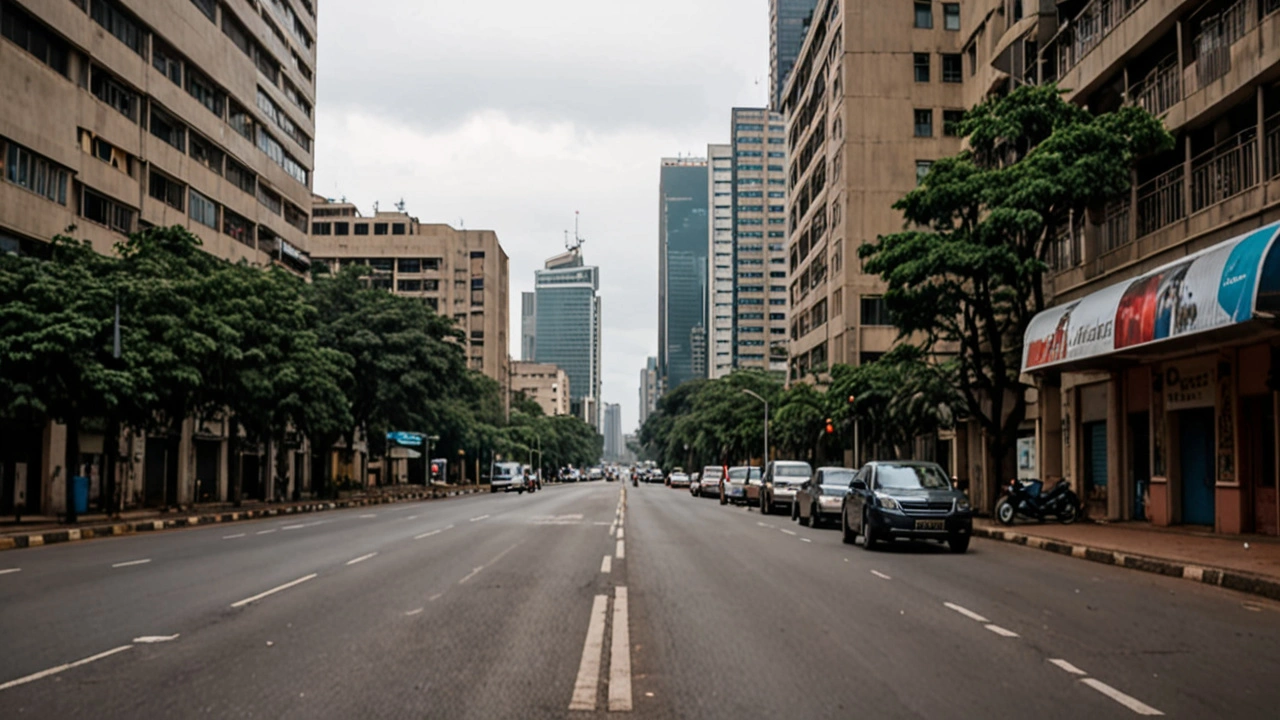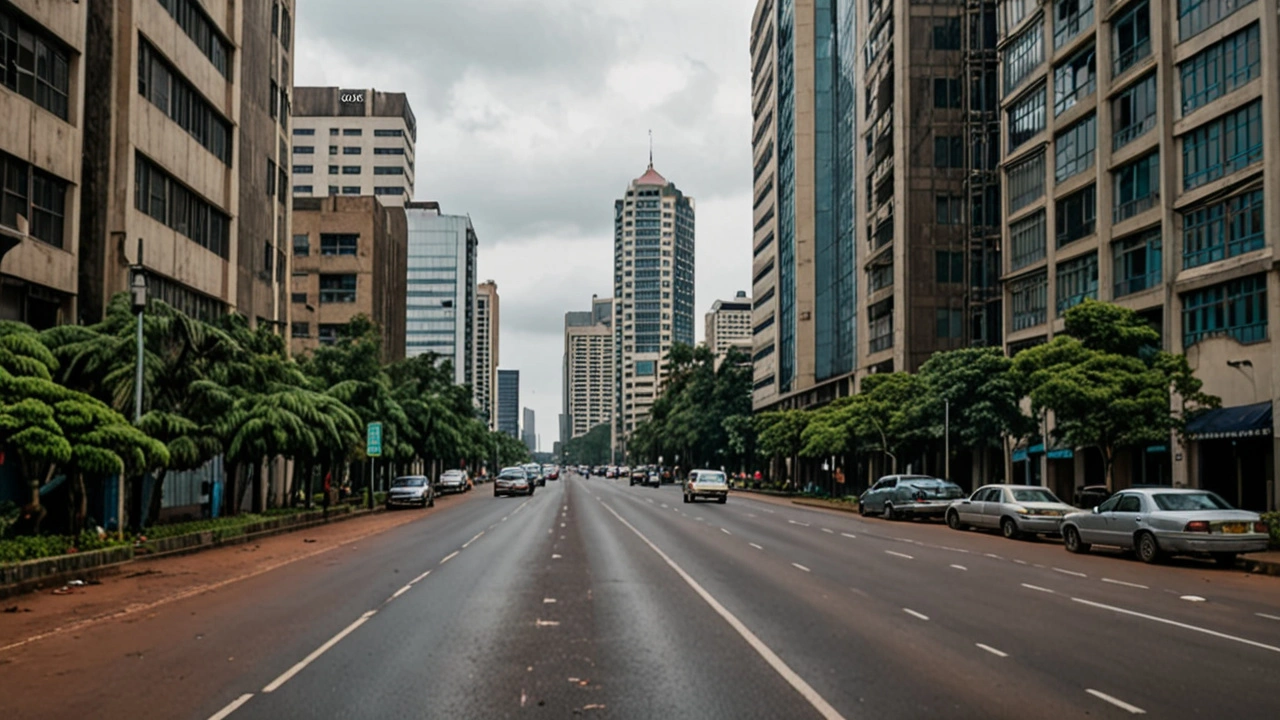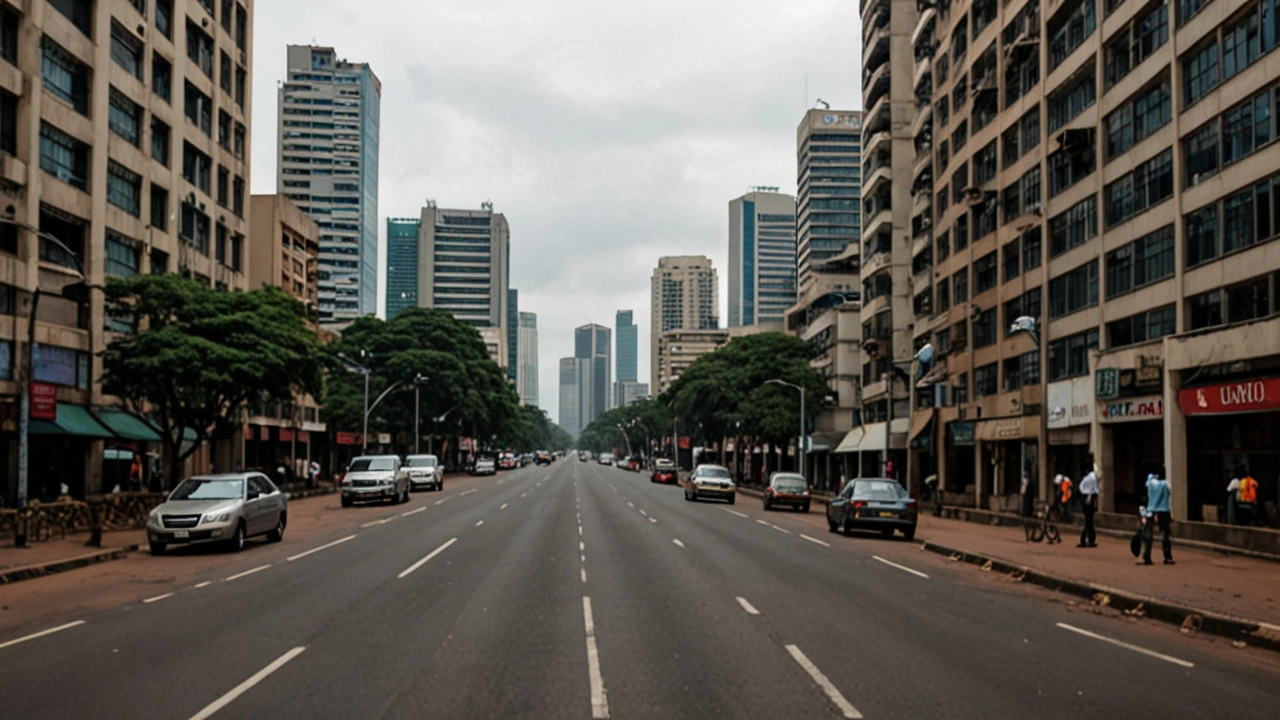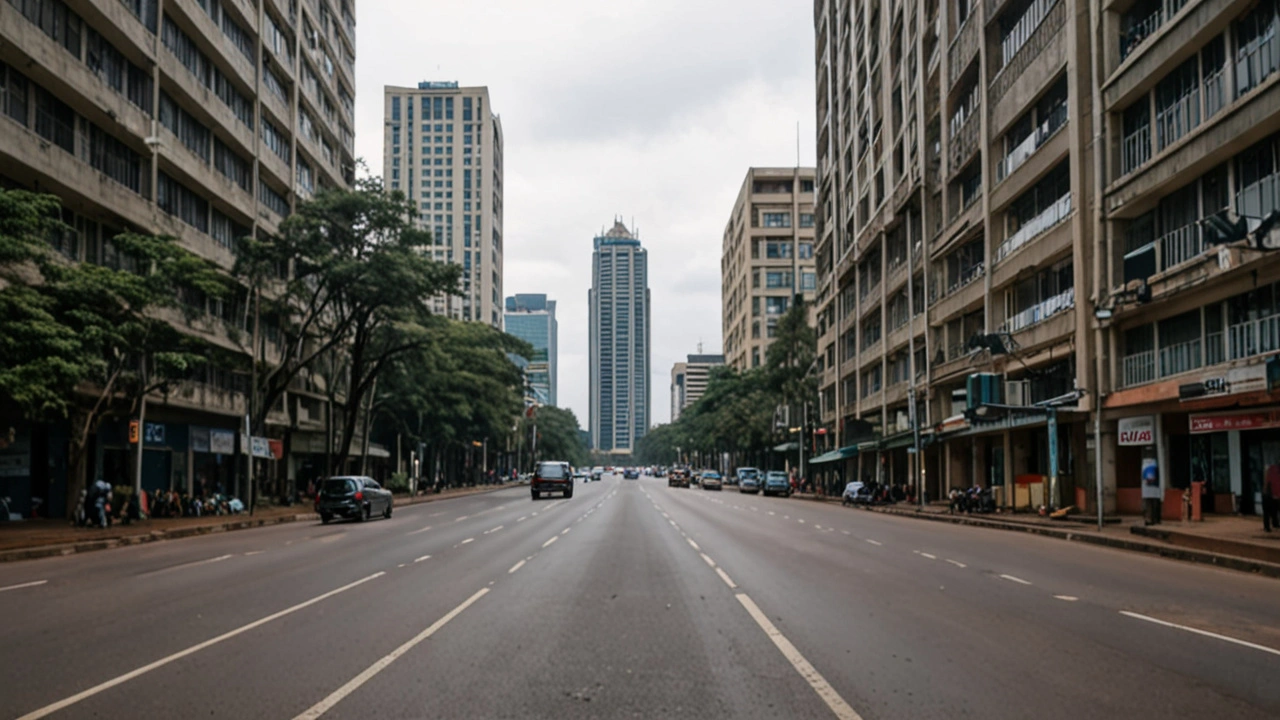Deserted Streets in Nairobi's CBD Amid Anticipated Protests
In an unusual scene for Nairobi’s bustling Central Business District (CBD), the city stood eerily quiet on the 16th of July, 2024. The streets were devoid of the usual throng of people and frenetic activity. Businesses, usually the lifeline of Nairobi's economic hub, shut their doors tightly, creating an atmosphere of unease among the few who dared step outside. The city's calm was not an indicator of peace but rather a forewarning of the looming protests that promised to shake the heart of Kenya's capital.
Security was tight as police officers strategically positioned themselves across key locations within the CBD. Every road leading to the State House had blockades, creating a fortress-like perimeter to thwart any attempts by protesters to approach the president’s residence. The authorities were on high alert, ready to respond to any outbreak of unrest. The sight of armed officers patrolling the typically open streets was a stark reminder of the tension that gripped the city.

Protests Take Root in Mombasa
While Nairobi prepared for the worst, Mombasa had already plunged into the wave of demonstrations. The coastal city witnessed hundreds of residents taking to the streets, brandishing placards and waving the emblematic Kenyan flag. The protests were markedly peaceful, a poignant effort led by activists to shed light on their demands without resorting to violence. Notably, there was a conspicuous absence of police near the protesters in Mombasa, a stark contrast to the heavily guarded streets of Nairobi.
Among the throngs of demonstrators in Mombasa, the call for accountability resounded clearly. Boniface Mwangi, a prominent activist, voiced his determination to continue the peaceful protests until the government assumes responsibility for the recent deaths of protesters. Mwangi's resolve mirrored that of many Kenyans frustrated by the perceived lack of justice and transparency from the authorities.

The Impact on Nairobi Schools and Daily Life
The protests' far-reaching impact was also felt in Nairobi's educational institutions. Moi Avenue Primary School, a usually bustling center of learning, saw its classrooms eerily empty. Parents, fearing potential chaos and unrest, opted to keep their children at home. The proximity of the school to planned protest routes contributed to the drop in attendance, as safety concerns outweighed the need for uninterrupted education.
Businesses, travel, and the everyday lives of Nairobians were disrupted. Commuters faced unprecedented difficulties navigating the city with roadblocks and police inspections becoming routine. The heavy police presence added to the anxiety as people navigated the city, unsure of what the day would hold. It was a stark reminder of the tension that has been building over time as social and political issues gnaw at the fabric of Kenyan society.

The Broader Implications
These protests are symptomatic of a larger picture of dissatisfaction among Kenyans. Economic difficulties, allegations of corruption, and instances of police brutality have fueled a growing unrest that the government can no longer afford to ignore. The call for accountability and justice has become more pronounced, with citizens demanding tangible changes rather than mere promises.
As the nation watches Nairobi and Mombasa, the government’s response will be crucial in shaping the future course of events. The world is keenly observing Kenya’s handling of the situation, recognizing that the country stands at a pivotal juncture. The protests may serve as a catalyst for formidable change, or they could plunge the state into deeper turmoil depending on how the demands of the protesters are addressed.
Historical Context
Kenya has a history of contentious political landscapes, with protests and public demonstrations being a common avenue for expressing discontent. From the independence movement to the post-election violence in 2007-2008, the Kenyan populace has long used protests to call for justice and reforms. Despite efforts to modernize and democratize, the nation still struggles with deep-seated issues like bribery, nepotism, and inefficiency in governance.
The current wave of protests stems from specific grievances but is also a continuation of this historical trend. It underlines a populace that remains vigilant and willing to take to the streets to demand a better future. The ability of these protests to bring about meaningful change will depend on multiple factors, including leadership, political will, and the responsiveness of the Kenyan judiciary.
Moving Forward
For Nairobi, Mombasa, and the rest of Kenya, the days ahead are uncertain. The protests have highlighted significant grievances that need addressing. Whether through dialogue, policy changes, or more direct action, it is clear that the voices on the streets will not be easily silenced. The government's ability to navigate this crisis with sensitivity and foresight will be critical.
Ultimately, the peaceful nature of the protests in Mombasa offers a glimmer of hope. It shows that civil demonstration can be conducted without descending into chaos and violence. This model could serve as an example for other regions and for the days ahead in Nairobi, where the potential for unrest remains high.
In conclusion, the deserted streets and heavy police presence in Nairobi's CBD, coupled with the peaceful protests in Mombasa, paint a complex picture of Kenya's current social climate. It is a moment that calls for reflection, accountability, and decisive action to address the underlying issues that have brought the nation to this tense juncture. The future, undoubtedly, hinges on how these protests are handled and the steps taken to mend the societal fractures they underscore.


Pooja Kri
July 18, 2024 AT 00:57Sanjeev Kumar
July 19, 2024 AT 09:28history doesn’t repeat, it echoes. and right now, the echo is getting louder.
Hemlata Arora
July 20, 2024 AT 17:01manohar jha
July 22, 2024 AT 07:46the fact that mombasa stayed peaceful? that’s the real power move. no broken windows, no chaos-just truth on the streets. kenya’s got soul. and that’s worth more than any police barricade.
Nitya Tyagi
July 23, 2024 AT 08:32Sanjay Verma
July 24, 2024 AT 18:58what’s wild is the police absence there vs. nairobi’s fortress. why? because they know mombasa won’t burn. and nairobi? they’re scared of their own people.
also-boniface mwangi? he’s the real deal. check his documentary on youtube. it’ll make you cry. then make you march.